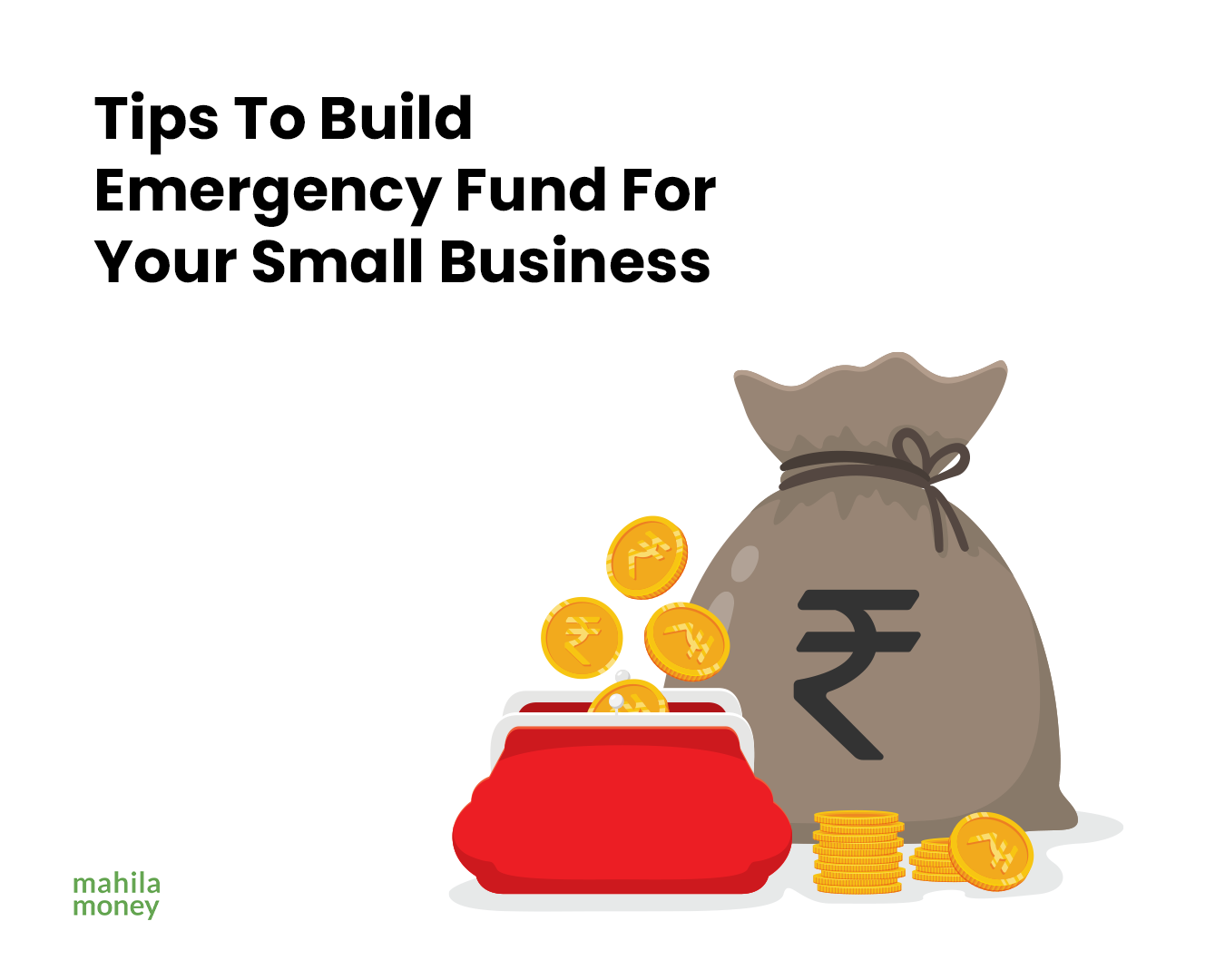Learn actionable smart tips to build emergency fund for your small business to ensure financial stability during unexpected challenges.
Building an emergency fund for your small business is no longer a choice but a necessity. If you’re running a small business, unexpected financial setbacks—such as equipment failure, payment delays, or even a sudden surge in order can disrupt operations and jeopardise growth. An emergency fund is a financial cushion that allows businesses to survive these challenges. This guide will explore ways to build an emergency fund specifically for small business needs and actionable strategies to ensure financial stability.
Apply for a Business Loan
Why Do Small Businesses Need an Emergency Fund?
“According to a recent survey, over 40% of women-owned small businesses lack adequate emergency funds, putting them at risk during downturns.”
What is an emergency fund? An emergency fund is amount set aside to manage unexpected expenses. Unlike general business savings, which might be designated for expansion or long-term initiatives, an emergency fund serves as a short-term safety net. An emergency fund helps manage unexpected costs, like fixing broken machinery, dealing with delays in customer payments, or coping with seasonal slowdowns.
Take, for example, a local café that experienced a refrigeration breakdown. The owner’s emergency fund covered repairs without taking on debt, allowing operations to continue seamlessly. An emergency fund can offer this level of protection, ensuring that your business remains operational through everyday disruptions and market fluctuations alike.
How Much Should You Save? The Role of the 50/30/20 Rule
For small business owners, figuring out an amount to reserve for an emergency fund can be difficult. A straightforward guideline to consider is the 50/30/20 rule. Although typically used for personal finance, this approach can be adapted for businesses to help manage cash flow and allocate savings effectively.
The 50/30/20 rule divides income as follows:
- 50% for essential expenses – rent, utilities, payroll, and other operating costs.
- 30% for growth and development – marketing, new hires, or inventory expansion.
- 20% for savings – this includes your emergency fund.
Consider reserving three to six months’ worth of essential expenses to calculate the ideal emergency fund amount. However, high-risk industries may benefit from a larger fund. If your business has fluctuating income, allocate a higher percentage to the emergency fund during profitable months. Flexibility within the 50/30/20 rule ensures you set aside enough without compromising day-to-day operations.
5 Smart Tips to Build Emergency Fund for Your Small Business
For building an emergency fund for your small business, below are five smart tips to build emergency fund for your small business:
#1. Set Clear Savings Goals
Set a target amount for your emergency fund based on your average monthly expenses. A good rule of thumb is to aim for three to six months of operating costs, though you may choose a higher amount if your industry is more volatile.
#2. Automate Your Savings Deposits
Setting up automatic monthly transfers to your emergency fund can make saving more accessible and consistent. This helps entrepreneuers resist the urge to spend that money on other things. Even saving a small amount, like 5% of your income, can increase over time and help your emergency fund grow steadily.
#3. Use a Separate, High-Liquidity Account
Keep your emergency fund in separate account, like a business savings or money market account. This way, you can access the money when you really need it. Separating these funds from your regular business expenses makes you less likely to use them for day-to-day costs. Choose a low-risk account that offers a modest yield so the money can grow with minimal management.
#4. Reinvest Unexpected Gains and Seasonal Profits
If your business does well during the festive season or you receive an unexpected windfall, allocate part of this income to your emergency fund. This strategy allows you to build reserves more quickly during peak periods without stretching regular monthly cash flow.
#5. Cut Unnecessary Expenses to Boost Savings
Always find ways to save money. Check your subscriptions, service fees, and other non-essential costs regularly. This can help you discover savings that can improve your emergency fund.
Emergency Fund vs. Savings – Are they the same?
Are emergency funds and savings the same? Knowing the difference between an emergency fund and regular business savings is essential for business success. Emergency funds help cover unexpected expenses. Regular business savings are for planned costs, like expanding the business, launching new products, or running marketing campaigns.
By keeping these two funds separate, business owners can avoid tapping into resources meant for growth. An emergency fund should ideally be kept in a high-liquidity, low-risk account to ensure it’s available whenever needed. Regular savings, in contrast, may be placed in investments with moderate returns, as they don’t need to be accessed as urgently.
Summing Up the Importance of an Emergency Fund for Your Small Business
Building an emergency fund for your small business is essential for ensuring financial security. By implementing a plan, such as the 50/30/20 rule, automating your contributions, and keeping emergency savings separate from general funds, you position your business to tackle unforeseen challenges. This fund acts as a support system, allowing your business to be ready for anything that comes your way. Save smart and continue to #JiyoApneDumPe.
Read more blogs:
10 Ways How To Spend A Business Loan Wisely
How to Build a Strong Credit Score Before Applying for a Business Loan
Why Is My Loan Getting Rejected? Top 14 Reasons and How To Fix Them

If you are a woman entrepreneur who wants to take your business to new heights and is in need of working capital and entrepreneurship resources, come speak to us on Mahila Money. For more such #JiyoApneDumPe live conversations, download the Mahila Money App on Play Store or visit us on www.mahila.money




